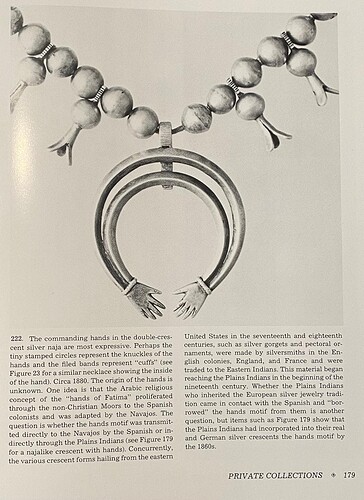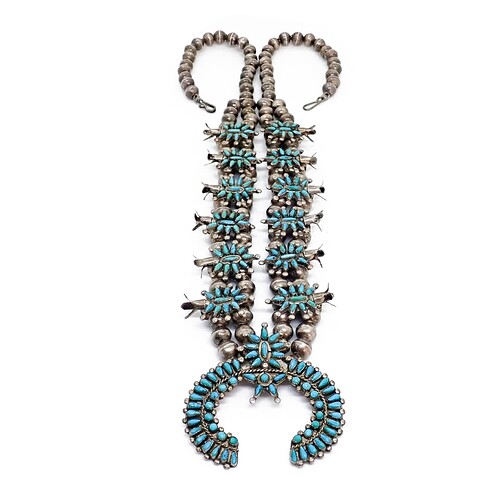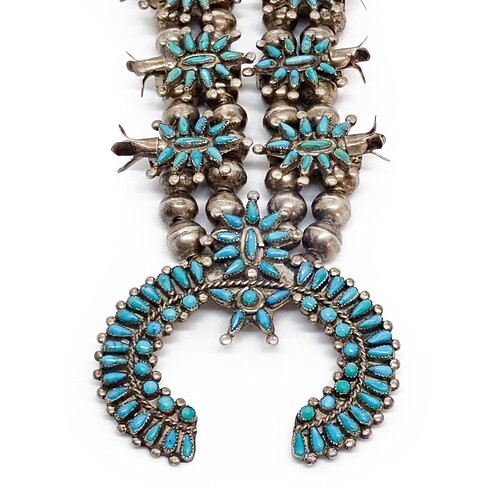Sorry, I think you misunderstood me. I never mentioned my boss. I said that my vendor often calls unknown stones Kingman. And as previously mentioned, it’s like a joke between him and his clients. Just like you, he just guesses some stones are Kingman without making any claims, nothing malicious or deceptive. Buyers want dealers to guess, and as I said before here, that’s how we use any information we gather about our pieces: educated guesses. ![]()
This is more what I am used to seeing (there is a lot of info online that I do not trust, but these are good sites).
But like any mine, it varies. Here are a couple more pics…
These are all 3 listed as Ithaca Peak.
And here’s mine…
The one you posted from Durango looks very similar to the ones I have seen on the Turquoise Moose site. I haven’t dealt with them but they seem okay. They are stone cutters and claim to source them directly from the mines. They are so different from the webbed one. Lots to learn and long ways to go. ![]()
Hey chic, thought this was interesting. From Indian Silver Jewelry of the Southwest 1868-1930, by Larry Frank. Not sure how accurate the dating is on this necklace, but this one is dated 1880…
I saw that. What a killer squash—I would love to have one like it.
@Tah Wow what an example. Of course, Larry Frank literally wrote the book on the earliest Navajo jewelry, or at least a definitive one. Some historic photography is hard to decipher because of the angle of view: a fourth petal can be out of the sight line. But this does look like there are just three, doesn’t it! Excellent contribution!
Awesome information. Thank you! I love the pics of old squashes. I wonder if my boss has a real old one. I will certainly check now and compare. ![]()
You can view the entire book here, but you will need to create a free account first if you haven’t done so already. You will find many other books on Native American jewelry and art, as well. ![]()
The Ithaca Peak that they’re selling nowadays it’s so full of pyrite it always makes me think it’s that Mexican Turquoise full of pyrite. It doesn’t even look like Ithaca Peak to me.
That’s what I have noticed. That’s why I asked. I’m not very familiar with Mexican turquoise, so I wouldn’t know. Thank you!
This is great! Thank you so very much for taking the time to share it. Often when trying to learn more, we don’t know exactly where to go for accurate information, so this is very helpful!! ![]()
Hmmm …I’m not very familiar with Mexican turquoise except Sonoran Gold; haven’t seen large amounts of pyrite in that. I guess I feel like I’ve seen a lot of Ithaca Peak with big chunks of pyrite, and less with the tighter spiderweb. When I see the big chunks then I figure it’s not Kingman.
Hey all, it must be karma, but a couple nights ago, after this great discussion, my husband and I were watching Antiques Roadshow. And what should show up but a fabulous 1920ish 4 petal squash. I was drooling!!! Thought you’d all enjoy it:
I just watched it. Really cool! Thank you for sharing it.
If you ever come across a squash of this quality (in your Bosses stash? ![]() )…let me know
)…let me know ![]() .
.
I sure will. I would probably post it here. ![]()
Oh yes, I was drooling over that one also!
shows both 3 & 4 petal construction
Indian Silver Smithing - W. Ben Hunt - page 131 - plate 44
copyright 1960
I’m back with another 4-petal squash… not sure about these stones. Any thoughts? If I had the money I would hire all of you as consultants. Lol. What an awesome group! Thank you for your time. I’m learning a lot!
And just out of curiosity, did the Zunis do any of this work as well? Or are squashes mainly crafted by the Navajos?
Beautiful squash. This is a classic mid century Zuni squash. It’s a popular style and these generally sell well. I wouldn’t make a claim to the turquoise, but I beleive it’s natural and American. Could be Sleeping Beauty which was very popular for Zuni petit and needle point work.






